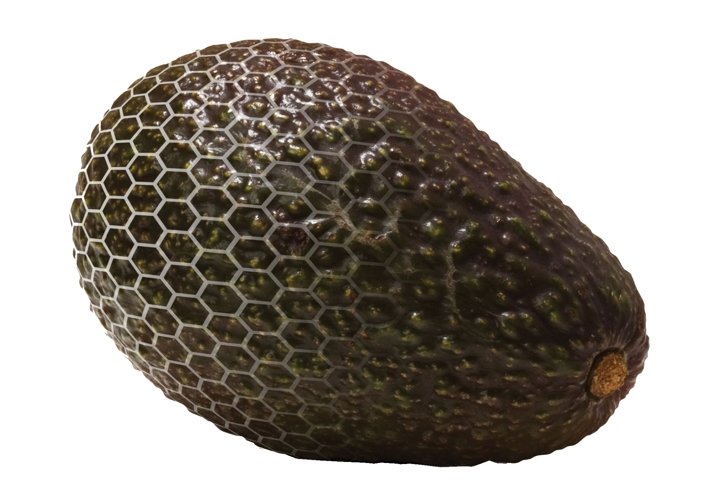
There’s basically nothing more frustrating than purchasing fresh fruits and vegetables only to have them go bad before you’ve had a chance to eat them. If you follow a plant-based diet, the struggle is even more real. From avocados and asparagus to bananas and berries, one of the pitfalls of fresh produce is its speedy expiration date.
But what if you had two to three times longer to use what you bought? In a roundabout way, that’s the question Apeel Sciences founder James Rogers asked himself when he learned that the United States throws away approximately one-third to one-half of its harvested produce. Globally, 1.3 billion tons of food produced for human consumption are wasted each year.
With the world already in danger of not having enough food for the people who will be on the planet in the next 30 years, it’s clear the current food waste situation is dire. Rogers says there are two choices: “feed more people with fewer resources, or deal with the sociopolitical issues of not having enough food.”
After some research, Rogers discovered refrigeration in what’s called the “cold chain” (temperature-controlled food storage and transportation systems) has helped drastically reduce food waste. But refrigeration isn’t accessible in some parts of the world, and it’s energy intensive.
“I wanted to extend the shelf life of produce—not just for farmers who don’t have access to refrigeration, but also at retail and all the way to your countertop,” he says. Of Apeel, where he’s now science director and CEO, he says, “We believe the simplest way to move the needle on resource savings is to use less.”
Food saves food
The idea for Apeel came from an unlikely comparison: rust on steel. Rogers considered the way oxidation creates rust that “spoils” steel by breaking it down. Metallurgists solved the problem by adding different atoms to the surface of the steel to create a barrier that would diffuse the oxygen. Rogers founded Apeel Sciences in 2012 to do the same for produce.
On a macro level, Apeel uses food to preserve food. The product is composed of plant-derived materials that employ plants’ natural defenses to create an extra “peel” around the outside of the produce (see “How it works”). This means produce can be harvested when it’s more mature and contains more nutrients—and it stays fresh a heck of a lot longer.
Produce gets Apeel
With backing from big-name investors like the Bill & Melinda Gates Foundation and Andreessen Horowitz, the company has already rolled out Apeel avocados in select grocery stores. For Rogers, giving avocados the Apeel advantage made perfect sense.
“Avocados have reached internet meme status,” he says. (One popular meme reads, ‘“Not yet, not yet, not yet, eat me now, too late.’ – Avocado”) Rogers adds, “We don’t think that’s funny—we think it’s sad.”
After avocados, Apeel set its sights on preserving finger limes. Sometimes called caviar limes, the cylindrical fruits contain pearl-like sacs full of lime juice. If you haven’t heard of this foodie phenomenon, it’s likely because the short shelf life has prevented widespread distribution. Apeel has a solution that’s on track to arrive this year.
“Apeel finger limes are one example of how we can increase biodiversity in grocery stores,” Rogers says. “With the longer shelf life, we can now take some of these really cool and nutritious products and bring them to new areas. This will also help small farmers grow their businesses.”
With Apeel asparagus set to arrive by the end of the year as well, the company continues to ramp up its offerings, solving the food waste problem the natural way.
“Nature has the answer to the problems we’re facing today,” Rogers says. “The idea isn’t to create something in a lab that plants have never seen. We’re simply using the solutions they’re already using.”
How it works
- Apeel gathers plant materials like seeds, rinds, pulps or peels from sources like soup plants, wineries, farms and other food processing facilities. It can use any plant that grows above the earth’s surface.
- It takes lipids and glycerolipids from the plants—the same materials plants use to defend themselves—and turns the lipids into powder “formulations.” The individual formulations vary. The Apeel formulation for avocados, for example, differs from that for asparagus.
- The powders are shipped to the farms or processing plants where Apeel goes on the produce, including USDA Organic certified produce.
- The powder is mixed with water, and the formulation is applied via a spray, rinse, drench or other delivery method.
- When the produce dries, the formulation creates a thin, invisible and tasteless barrier on the surface that acts as an edible peel, minimizing moisture loss and reducing oxidation. By maintaining the produce’s microclimate, Apeel helps the food last two to three times longer without refrigeration.











